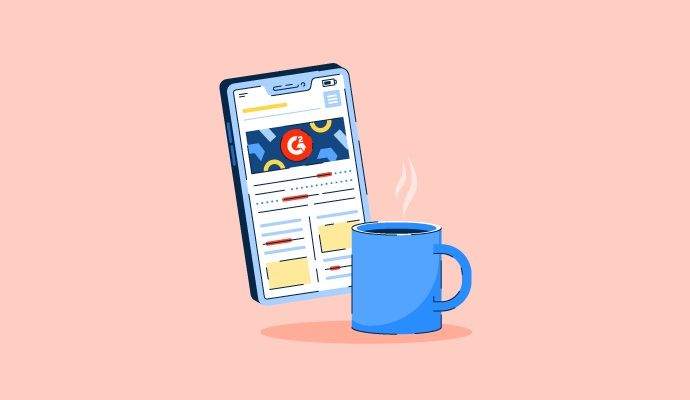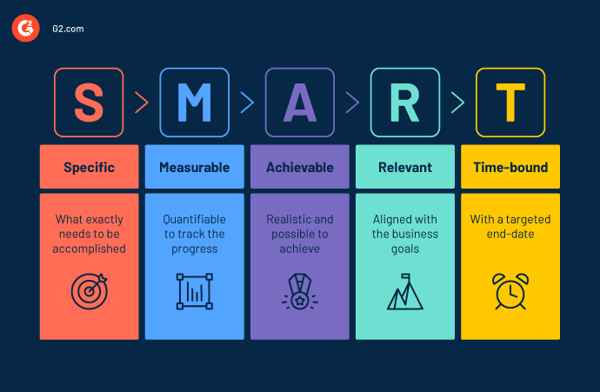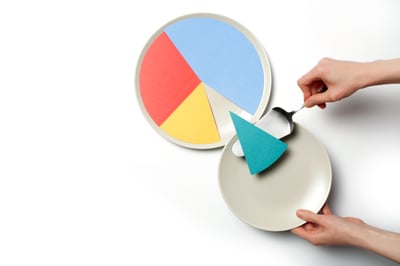October 19, 2022
 by Vibhooti Kayastha / October 19, 2022
by Vibhooti Kayastha / October 19, 2022

Digital media has redefined 'content marketing'!
In the last decade, how we interact with brands, celebrities, friends, and frenemies has changed significantly. We’re all connected through a digital world and a lot of us are creating content!
Content creation is the production of information or marketing material for an audience. Content creation in marketing often involves informational or educational content combined with brand messaging.
Digital advancements have allowed the content creation process to evolve exponentially in the last few years. The multiple steps of producing quality content, from ideation to performance measurement, have become less cumbersome with content creation software.
Because it’s easier there is no dearth of content these days, and content creators aren’t just marketers. A 10-year-old creates a Snapchat story while a 45-year-old makes a photo collage to share their last road trip.
For most of us, we create content to share how awesome our lives are (you’re doing amazing, sweetie!) and to fish for likes and reposts, aka, for clout.
If you’ve found this article, you’re looking for a more focused approach to understanding content creation, its importance, and how you can make work that hooks your audience.
Let’s dive into the world of content creation, starting with its importance.
In 2021, an adult’s average time spent daily consuming digital content was 8 hours. With stats that high, there’s an evident increase in digital marketing efforts leading to more digital content creation.
Let’s break down which areas content affects and how they help with a company’s development.
At this point, if you are convinced that content does boost business growth, let’s jump to the most popular types of content.
Like us humans, content comes in all shapes and sizes. They all have their importance, impact, and returns. Hence, understanding content mapping is critical, i.e., each content type serves a specific purpose and reaches the targeted stage of the buyer's journey.
In the last few years, marketers have also observed the evolution of content creation trends. Some of the most common types used in digital marketing are listed here:
1. Infographics: Do you want to share a process or statistics? Infographics, which are quick-to-grasp and top-of-the-funnel, visually represent this kind of information.
2. Blogs: Short or long-form content that revolves around a particular theme. It’s an effective format to address ToFu and MoFu so readers get invested in exploring areas of interest.
Example of long-form content: Ultimate Digital Marketing Guide to Improve Your Business ROI
3. White paper: Do your research and findings need space more than a blog? Then show that to your audience by publishing a white paper. It engages readers who want to dig deep into a complex topic.
Example: eBook by G2 Seller Solutions on ‘How to Lower Your CAC on LinkedIn’
4. Podcasts: An increasingly popular format and an exciting way to give a personal touch to your brand, this audio format are great for reaching your audience. While it can be an original content piece, marketers also use this to repurpose the existing written content.
Example: Listen to G2’s CMO Amanda Malko on a podcast hosted by Mission on Marketing Trends
5. Webinars: While other formats are more of a one-way to drive desired actions, webinars are more of an interactive format. A webinar gives the attendees a chance to understand a topic through dialogue.
Example: G2 and ZoomInfo came together to host a webinar on ‘The Art and Science of Intent-driven Campaigns’
6. Videos: If you think an audio-visual format can better retain your audience’s attention, then consider making videos. An engaging video can make viewers anywhere along the sales funnel step closer to decision-making in a shorter cycle. Marketers experiment with this format in multiple ways, such as animation, gifs, or sound effects.
Example: Check out the recording of an event on ‘Deepfakes: What B2B Leaders Need to Know’ hosted by G2
7. Case studies: This is the most effective way to share success stories and third-party evidence of your brand’s value. They offer the readers relevant information with a trust factor that helps them in their decision-making.
Example: A case study on how ‘Plytix Reduces CPL by 82% with G2 Marketing Solutions.
Let’s turn to understanding what makes content good, as the ultimate goal is to engage the audience and drive them to the desired action.

Every Thursday, we spill hot takes, insider knowledge, and news recaps straight to your inbox. Subscribe here
With so much information available these days, businesses must figure out ways to stand out. Here are the elements you need to ensure your content resonates.
1. Relevant: The most crucial aspect of any content is whether it’s relevant to your target audience and aligned with your business goals. These are some parameters that guarantee your content stays relevant.
2. Consistent: Out of sight, out of mind, especially when there are too many players in the market. Understanding what frequency works to enhance trust and credibility should be an essential part of content marketing. A few factors to consider while deciding the frequency of your content might be:
3. Informative: Does the content play an important role in the consumers’ journey? Informative content should simplify the buyers’ journey. The following metrics can ensure the content is informational
4. Engaging: Can your content hold consumers’ attention? With decreasing attention spans and increasing flow of content, you must ensure your content stands out. To hook your audience, make sure your content ticks these boxes
5. Action-driven: The return on investment (ROI) from content marketing for any marketer is measured in engagement. The action here can be of any form aligned with the business goals. Here are a few elements that can support action-oriented content.
Now comes the tricky part: how do you decide what kind of content to create?
A content strategy gets relevant content to the right people at the right time. Let’s discuss ways you can make content creation easier.
Be clear about your goals. Some of the goals could include:
Once you have decided on the goals, ensure these are SMART – specific, measurable, attainable, relevant, and time-bound. These metrics guide your content strategy.

If you know your audience inside and out, the content you create resonates with them. Apart from target demographics, understanding your current audience’s behavior, thoughts, and needs is a good starting point to create a buyer persona. The additional benefit of knowing your customers is that you get what marketing channel is most effective.

Once you’re clear with the goals and the target audience, the journey of exploring great content ideas and creation begins. Here are some elements that help with the content ideation process.
Their journey starts when they have a problem to address. After this, they research and compare multiple solutions that lead to an informed buying decision.
Essentially, the journey always consists of three main stages: awareness (problem is recognized), consideration (potential solutions are compared and explored), and decision (purchase decision is made).
Your content strategy can target one or all stages of the buyer’s journey depending on the end goals.
Content ideas abound these days, but mapping an idea to the business goals and the audience can be challenging. Here are a few ways that can help you home in on ways to structure the ideation process without getting overwhelmed by the amount of content that exists.
You need a plan to organize and execute a content strategy that meets marketing objectives. Consider these factors to ensure your content ideas come to life without glitches and within the decided timelines.
A content calendar, also known as an editorial calendar, is used to schedule content and track it. It comes in handy if there are multiple content pieces in various stages and you need to quickly check which article is at what stage.
It’s always helpful to have an overview of all tasks, whether your project is big or small. Many marketing calendar software available assist marketers in planning, creating, and organizing content and collaborating with stakeholders. Teams can easily share updates within and outside organizations without the need for emails.
Now comes the heavy lifting. Content creation might take days or weeks, from the first draft to the final piece, depending upon the review and approval process. Don’t skip these elements that should be a part of any content creation process.
At G2, we ensure that all content types go through a thorough review process, including competitive analysis, copy-editing, design review, and SEO review, before reaching you.
After content creation, a robust publishing strategy will attract the right audience.
Data is everywhere, so why should marketers shy away from data-driven content strategy? Circling back to your business goals, the next important step is measuring its performance. Use some of these metrics to rate the performance.
Overall, the goal of performance measurement is to understand what’s working and what needs to be improved, which brings us to the last, essential part of the strategy.
Consumers are humans; their wants and needs are bound to change. Therefore, you must understand what’s working for you and what isn’t.
Focus on these three areas while you optimize your content pieces.
Tip: Boost your SEO with internal linking! When relevant content on your site is linked to a new piece, search engine crawlers can discover and rank your content more easily. Internal links also provide credibility to new work as bots understand the relationship between content pieces and share the link value.
Additionally, user-generated content can help you understand content performance. However, this exercise involves a regular content audit with rewrites, new content creation, or even the removal of content. Let’s not get too attached to our content!
If not marketed well, the best content might not get you desired results. Marketers realize the importance of effective content marketing. They’re trying to sell the content and also to hook the audience with some value addition. This strategy creates a community and increases your customer base.
A well-planned content strategy that we discussed above should take care of most of the content marketing part; however, answering the following best practices will further strengthen it.
Content creation and marketing are the needs of the hour for businesses in today’s digital world, though these content creation agencies might not have the expertise to start with. In this case, content creation software can help.
Content creation software enables businesses to create content for their marketing initiatives. These content pieces can include written content, images, and infographics. Promoting collaboration among marketing team members, content creation products are used to plan all activities of content development.
To be included in G2’s content creation category, software must provide:
*Below are the top 5 leading content creation software from G2’s Fall 2022 Grid® Report. Some reviews may be edited for clarity.
Semrush is a leading online visibility management SaaS platform with over 55 products, tools, and add-ons including tools for search, content, or market research.
“Semrush is more than just an SEO tool; it offers a wide variety of features and functionalities, such as keyword research, competitor analysis, metrics for search requests, and so on. The best part is they also offer a 7-day free Semrush trial to try out their software before making any purchasing decisions which helps the user figure out if this is the right tool for them or not.”
-Semrush Review, Kabita L., Sep 01, 2022
“The only thing I don't like is its price. The monthly cost of Semrush is high and at times, for small organizations and individuals, it's not possible to afford this tool..”
-Semrush Review, Viney K., Aug 23, 2022
RELAYTO is an interactive experience platform that transforms any static content into engaging interactive experiences.
“We work for various clients at the agency and are required to make new content daily that we distribute across all the social media channels for the client. We used various software earlier to create content and then publish it on social media. Since we started using RELAYTO, it has become so easy for the whole team to create new content and share it.”
-RELAYTO Review, Noman K., Aug 31, 2022
“Using RELAYTO for the first time can be a bit overwhelming because there are just so many amazing features that we couldn't decide where to start.”
-RELAYTO Review, Hazel Kay A., Jul 15, 2022
Copy.ai uses cutting-edge artificial intelligence (AI) technology to enable entrepreneurs and marketers to collaborate, brainstorm, and write great content. It has 130+ templates and tools that writers use to communicate their ideas.
“The most helpful thing about Copy.ai is that it's incredibly accurate. I've used it for a variety of purposes, but I use it almost exclusively for writing blog posts and social media posts, and it consistently delivers material that's well-written, engaging, and on-brand.”
Copy.ai Review, Mncedisi B., Jul 04, 2022
“A simple text field to input my title, body, and tone would have sufficed. Instead, I had to create a project to get things going, not to mention I didn't notice/case for the interface/full package. I came here looking for quick copy ideas and I got it, but onboarding could be more simplified.”
Copy.ai Review, Ranj B., Jun 23, 2022
Scalenut is a content research and writing tool that brings together AI and natural language programming (NLP) that helps to create optimized long and short-form content.
“It's easy to use. Able to create high-quality blog posts in less than 3 minutes. It's relatively cheap compared to other AI writing tools. It comes with top-notch SEO and copywriting tools.”
-Scalenut Review, Joseph O., Jul 08, 2022
“The learning curve is a bit demanding at the start and you'll take some time to get accustomed to the different features available in the platform. Once you go through the platform, you'll find it easy to use.”
-Scalenut Review, Rahul M., Feb 16, 2022
Powtoon is a visual communication platform that enables people without much design or technical skills to create professional videos and presentations.
“Powtoon has excellent features for audio and video editing and presentation for sales and marketing. The Share feature helps multiple people to work and collaborate at the same time. Excellent tool for prototyping and presentation or demo.”
-Powtoon Review, Raunak A., May 24, 2022
“When using the free version, there are some limitations with what you can do with your video creation. For example, a person cannot download their video, nor can they make their video unlisted when uploading to YouTube. Because of the capacity for layering and icon movement, load time can take a moment, but all of these problems are solved with a higher bandwidth Internet and the paid version of the platform.”
-Powtoon Review, Jodi J., Jul 14, 2021
With this step-by-step guide, you’re well-equipped now to embark on the content creation journey. It might take some time to learn what works for you, but with digital content, there are no boundaries!
Take your content to market! Learn how to promote your content and take the masterpiece to your audiences.
Vibhooti Kayastha is a Content Marketing Manager at G2. When she is not working on content, she's busy reading non-fiction, sketching, exploring cafes, or planning her next travel. Always up for a good coffee and interesting conversations.
How long is your attention span?
 by Corinna Keefe
by Corinna Keefe
Content marketing is a vital part of building any business.
 by Macy Thornhill
by Macy Thornhill
From handwriting letters to online documents, we’ve come a long way.
.png) by Shreya Mattoo
by Shreya Mattoo
How long is your attention span?
 by Corinna Keefe
by Corinna Keefe
Content marketing is a vital part of building any business.
 by Macy Thornhill
by Macy Thornhill


